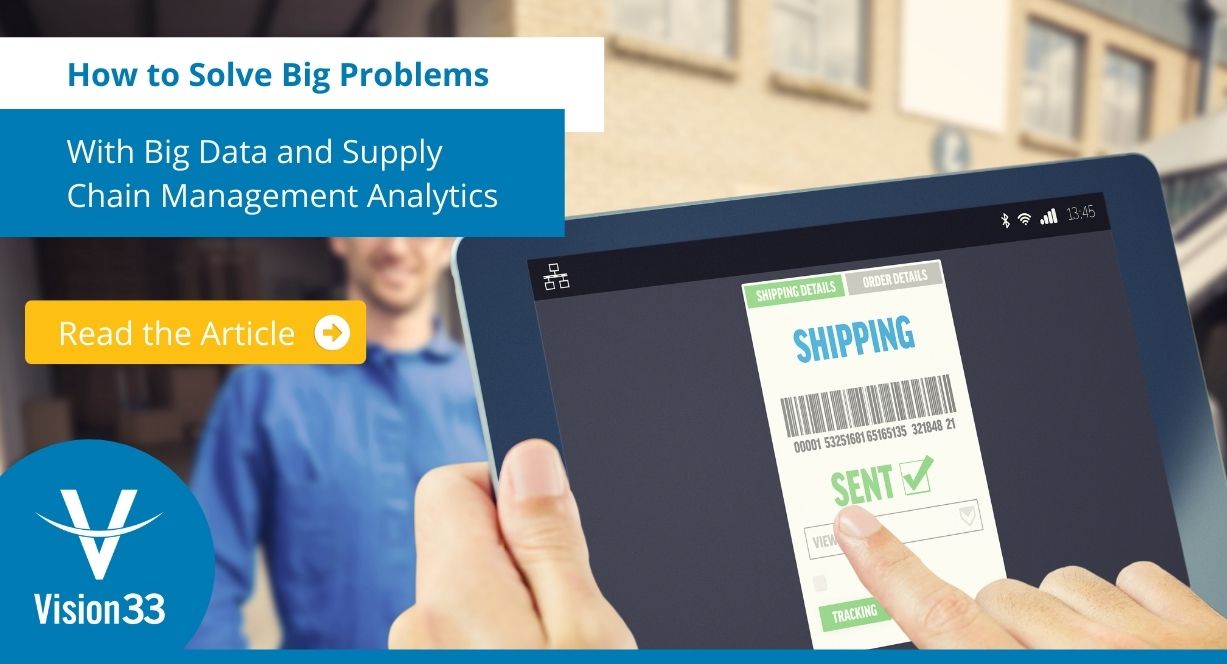Distribution Runs Better With SAP Business One
SAP Business OneSAP Business One is an enterprise resource planning (ERP) solution that helps distributors navigate...

March 01, 2017
Blog > How to Solve Big Problems With Big Data and Supply Chain Management Analytics
There’s an ebb and flow to the power balance between suppliers and buyers. The shift, caused by market elimination associated with the introduction of disruptive technologies, or the consolidation of competitors over the last several decades has left buyers with less options in who they choose to do business with. In these “supply markets,” suppliers have little competition, which is advantageous in negotiating prices with buyers. However, the internet of things and global markets have shifted favor once again. Customer expectations for when, where, and how they do business as well as buyer sourcing strategies have sent reverberations throughout the supply chain. Luckily for suppliers, business management solutions have caught up with the ability to better handle structured and unstructured enterprise data sources. What this means is that big data can now be leveraged to address the problem of supply chain planning in the internet age, driven by better demand forecasting.

When thinking of a supply chain management solution that can manage all distribution channels and simultaneously open the door to greater data analysis, enterprise resource planning (ERP) software category is at the forefront. In fact, supply chain management functionality is a subset of many ERP systems. And while companies manage their supply chain with legacy systems, disparate modules, and niche supply chain solutions, ERP software can be thought of as the connective tissue binding together supplier’s business in a single application; streamlining the flow of information from one department to the next.
ERP solutions can handle standard functions, be it warehouse processes such as picking and packing, shipping and order tracking, but it’s in the integration of customer and financial information that is key. When you factor in in-memory analytics, ERP solutions gives suppliers the ability to analyze big data from unstructured sources to better forecast demand in the supply chain.
Companies have been tracking data for years now, everything from logistics, sales and order tracking to POS system data but haven’t been able to do much with it. However, now this data can be further contextualized with unstructured data sources. Suppliers that implement ERP are leveraging theses new data sources to provide insight into demand forecasting. Supplementing traditional data with things like climate change, current events, politics, and trending topics in the social media sphere can all have an impact on demand forecasting in the short or long term.
Suppliers have specific needs for supply chain management and require a solution that provides insight into their supply chain to remain competitive. ERP software finally unifies the disparate data that once lived in various locations. It is robust enough to manage their complex distribution channels and can maintain a strategic advantage in the market with the ability to predict demand. Beyond greater decision making afforded by big data analysis, ERP software can further simplify supply chain management. For more on this, read about powerful analytics with SAP Business One on HANA Technology.
Subscribe to our newsletter to receive our latest blog posts, case studies and ERP news delivered straight to your inbox.
SAP Business One is an enterprise resource planning (ERP) solution that helps distributors navigate...
[Updated] Implementing the right technology helps biotech companies build more resilient supply...
Cloud ERP offers a solution to supply chain challenges by providing real-time visibility,...
Recieve our latest blog posts, case studies, and ERP news
delivered straight to your inbox.